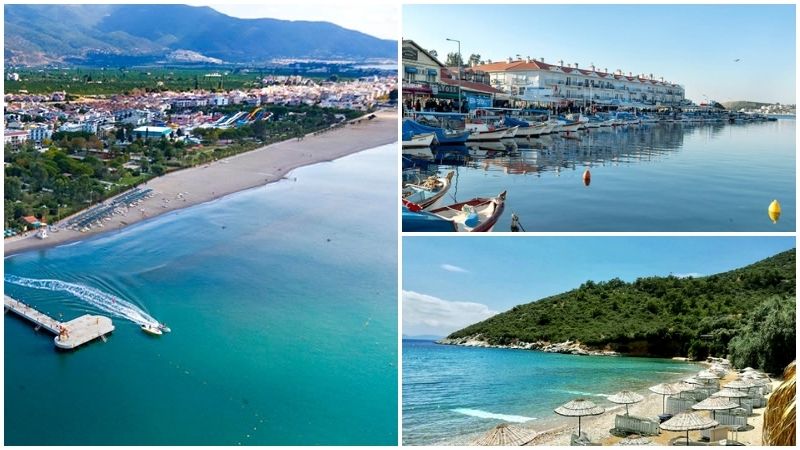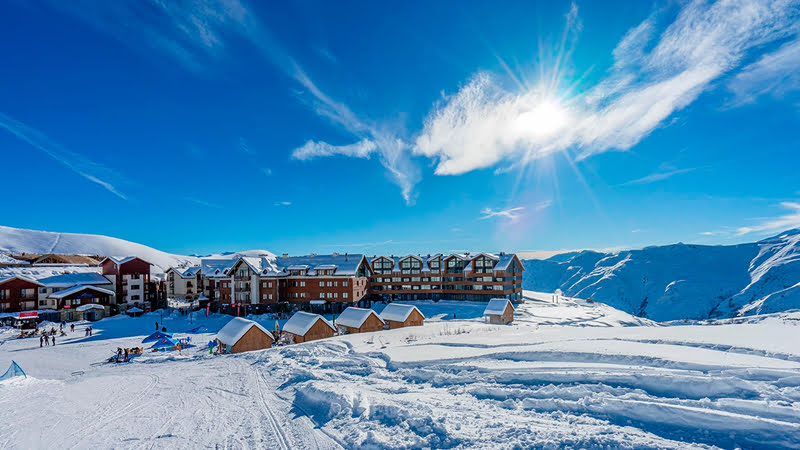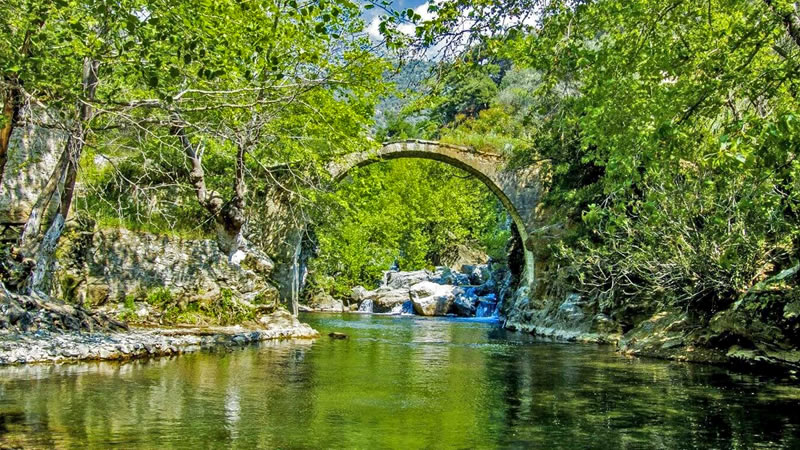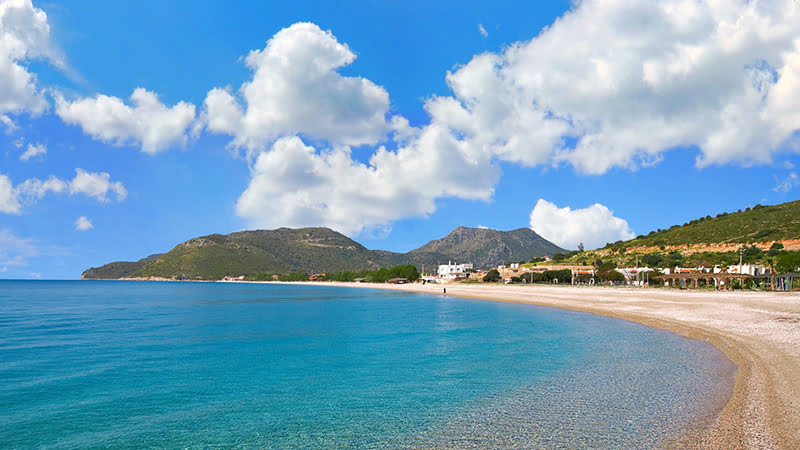Sumela Monastery - A Monument of Art Hidden in the Foothills of the Black Sea

Sumela Monastery is a fascinating religious structure located in Macka district of Trabzon in northeastern Turkiye and skillfully placed among the rocks. Rising like an eagle's nest among the lush green nature of the Black Sea, this monastery attracts attention with its architecture, history and religious importance. In this article, we will examine the history, architectural features, religious and cultural importance and current status of Sumela Monastery in detail.
Sumela Monastery, hidden among the deep valleys and dense forests of the Black Sea, has a story dating back thousands of years. Carved into the rocks in the harsh geography of the Eastern Black Sea and managed to survive despite the destructive effects of time, this monastery is one of the most important historical and touristic places in the region. Since the foundation of the monastery, it has served as a major religious and cultural center in both the Byzantine and Ottoman periods.
Sumela Monastery fascinates those who see it not only with its architectural structure but also with the natural beauties offered by its location. Located approximately 17 kilometers from the Macka district of Trabzon, at an altitude of 1,200 meters above sea level, the monastery stands almost clinging to the steep slopes of Karadag (Mela Mountain). It offers its visitors both a historical journey and an experience intertwined with nature.
The monastery was used for different purposes in various periods, and beyond being a religious center, it also served as a cultural and artistic center. The monastery is traditionally believed to have been founded in the 4th century AD by two monks, Barnabas and Sophronios, who came from Athens. The story of its foundation has survived to the present day as a legend combining religious beliefs, architectural genius and human determination.
The foundation of the Sümela Monastery is traditionally believed to have been founded in the 4th century AD by two monks, Barnabas and Sophronios, who came from Athens. Although it is not certain when the monastery was built, it is said to have been founded in 386 AD. However, most of the existing structures were built during the reign of Byzantine Emperor Justinian I (527-565) and expanded with various additions and restorations in the following centuries.
The monastery became an important religious center during the Byzantine period and a pilgrimage point for Christians in the region. During the Ottoman Empire, the monastery continued its activities and was protected by decrees received from the Ottoman sultans. During the population exchange between Turkey and Greece in 1923, the monastery was abandoned and fell into ruin over time.
Sumela Monastery was built on the steep cliffs of Karadağ (Mela Mountain), approximately 1,200 meters above sea level. The monastery complex includes various structures such as the main rock church, chapels, student rooms, a guesthouse, a library and a sacred spring. To reach the main entrance of the monastery, it is necessary to climb steep and narrow paths and stairs.
The main rock church is the most important structure of the monastery and its interior walls are decorated with frescoes. These frescoes are decorated with scenes from the Bible, saints and religious motifs and reflect beautiful examples of Byzantine art. In addition, other structures in and around the monastery also reveal the architectural and artistic understanding of the period.
Sumela Monastery is an important religious center for Eastern Orthodox Christianity. The name of the monastery comes from the Greek "Stou Mela", meaning "On Mount Mela". The monastery is dedicated to the Virgin Mary and the icon of the Virgin Mary is considered one of the most sacred items of the monastery. This icon is a religious symbol that is believed to perform miracles and has great importance for Christians.
The monastery functioned not only as a religious center but also as a cultural and artistic center. The monks living here wrote religious texts, produced works of art and engaged in educational activities. This situation turned the Sumela Monastery into not only a religious but also a cultural and intellectual center.
Sumela Monastery is one of the most important tourist attractions in Turkey. The restoration works that started in the early 2000s have allowed the monastery to be reopened to visitors and these works are still ongoing. The restoration works are carried out meticulously in order to preserve the structural integrity of the monastery and to prevent damage to the frescoes.
Sumela Monastery is visited by thousands of local and foreign tourists every year. In addition to discovering the historical and architectural beauties of the monastery, visitors can enjoy the magnificent nature of the Black Sea. The monastery also still serves as an important pilgrimage point for Christians.
Sumela Monastery is a unique structure where faith, art and culture have come together throughout history, where human engineering and nature exist in harmony. From the foundation of the monastery to the present day, its religious and cultural importance has never diminished and it has continued to fascinate its visitors in every period. The restoration works and touristic activities carried out today ensure that this historical structure is passed on to future generations. Sumela Monastery continues its existence as a monument of faith and art hidden in the foothills of the Black Sea, an important cultural heritage that bears traces of the past and sheds light on the future.
Sumela Monastery, hidden among the deep valleys and dense forests of the Black Sea, has a story dating back thousands of years. Carved into the rocks in the harsh geography of the Eastern Black Sea and managed to survive despite the destructive effects of time, this monastery is one of the most important historical and touristic places in the region. Since the foundation of the monastery, it has served as a major religious and cultural center in both the Byzantine and Ottoman periods.
Sumela Monastery fascinates those who see it not only with its architectural structure but also with the natural beauties offered by its location. Located approximately 17 kilometers from the Macka district of Trabzon, at an altitude of 1,200 meters above sea level, the monastery stands almost clinging to the steep slopes of Karadag (Mela Mountain). It offers its visitors both a historical journey and an experience intertwined with nature.
The monastery was used for different purposes in various periods, and beyond being a religious center, it also served as a cultural and artistic center. The monastery is traditionally believed to have been founded in the 4th century AD by two monks, Barnabas and Sophronios, who came from Athens. The story of its foundation has survived to the present day as a legend combining religious beliefs, architectural genius and human determination.
History
The foundation of the Sümela Monastery is traditionally believed to have been founded in the 4th century AD by two monks, Barnabas and Sophronios, who came from Athens. Although it is not certain when the monastery was built, it is said to have been founded in 386 AD. However, most of the existing structures were built during the reign of Byzantine Emperor Justinian I (527-565) and expanded with various additions and restorations in the following centuries.
The monastery became an important religious center during the Byzantine period and a pilgrimage point for Christians in the region. During the Ottoman Empire, the monastery continued its activities and was protected by decrees received from the Ottoman sultans. During the population exchange between Turkey and Greece in 1923, the monastery was abandoned and fell into ruin over time.
Structural Features
Sumela Monastery was built on the steep cliffs of Karadağ (Mela Mountain), approximately 1,200 meters above sea level. The monastery complex includes various structures such as the main rock church, chapels, student rooms, a guesthouse, a library and a sacred spring. To reach the main entrance of the monastery, it is necessary to climb steep and narrow paths and stairs.
The main rock church is the most important structure of the monastery and its interior walls are decorated with frescoes. These frescoes are decorated with scenes from the Bible, saints and religious motifs and reflect beautiful examples of Byzantine art. In addition, other structures in and around the monastery also reveal the architectural and artistic understanding of the period.
Religious and Cultural Importance
Sumela Monastery is an important religious center for Eastern Orthodox Christianity. The name of the monastery comes from the Greek "Stou Mela", meaning "On Mount Mela". The monastery is dedicated to the Virgin Mary and the icon of the Virgin Mary is considered one of the most sacred items of the monastery. This icon is a religious symbol that is believed to perform miracles and has great importance for Christians.
The monastery functioned not only as a religious center but also as a cultural and artistic center. The monks living here wrote religious texts, produced works of art and engaged in educational activities. This situation turned the Sumela Monastery into not only a religious but also a cultural and intellectual center.
Sumela Monastery Today
Sumela Monastery is one of the most important tourist attractions in Turkey. The restoration works that started in the early 2000s have allowed the monastery to be reopened to visitors and these works are still ongoing. The restoration works are carried out meticulously in order to preserve the structural integrity of the monastery and to prevent damage to the frescoes.
Sumela Monastery is visited by thousands of local and foreign tourists every year. In addition to discovering the historical and architectural beauties of the monastery, visitors can enjoy the magnificent nature of the Black Sea. The monastery also still serves as an important pilgrimage point for Christians.
Sumela Monastery is a unique structure where faith, art and culture have come together throughout history, where human engineering and nature exist in harmony. From the foundation of the monastery to the present day, its religious and cultural importance has never diminished and it has continued to fascinate its visitors in every period. The restoration works and touristic activities carried out today ensure that this historical structure is passed on to future generations. Sumela Monastery continues its existence as a monument of faith and art hidden in the foothills of the Black Sea, an important cultural heritage that bears traces of the past and sheds light on the future.























































































